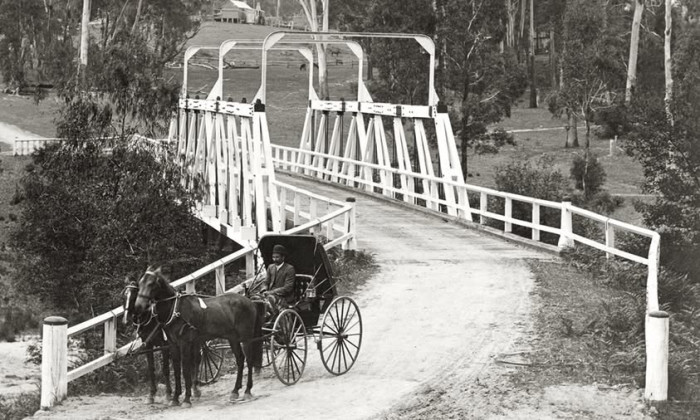South Coast NSW History Story
QUAAMA
Quaama
Most travellers along the Princes Highway by-pass Quaama, because Quaama was by-passed when the highway was realigned in 1972. The village now comprises a school, a shop/post office that also retails fuel, an old School of Arts Hall, a tennis court, a park with a playground, public toilets, a bus shelter, a public telephone, a cemetery and a collection of houses. The town was badly impacted by the 2019-2020 bushfire (a number of houses were burnt down, as was the Anglican Church).
The village probably emerged in the 1860s or 1870s to serve the needs of, and to be a meeting place for, local farming families and as a convenient stopping-off point on the road from Narooma to Bega – although it would always have been destined to be overshadowed in importance by the larger township of Cobargo about 12km up the road.
In the early 1830s, the squatter Henry Badgery took up land at what was then known as Dry River and in 1841 a William Bartley became the first white child to be born in the area. In 1866 the Government Gazette recorded ‘Dry River station, occupied by William Duggan Tarlinton, consisted of an area of 12,000 acres.’ This basically encompassed the area between Brogo and Dry River.
Dry River village developed on the northern bank of the Murrah River and the north-south road (named The Prince’s Highway from 1920) meandered through the village to a crossing, west of the current bridge. The locals called the river ‘Dry River’ and, being so insistent it be called this, ‘Murrah River’ signage at the bridge was regularly torn down by them. Eventually, the authorities realized they were waging a losing battle!
The name of the town was changed to Quaama – an Aboriginal word meaning ‘squabbling ground’ – in 1887.
The village was given some permanence when a school was built. This opened in 1877 with around 22 children (10 boys and 12 girls) attending. The following year a ‘postal receiving office’ (post
office) was established in the school.
Quaama was probably a fairly typical country village, experiencing periods of growth and periods of decline (the school closing on several occasions because of falls in enrolments; after World War I, one of the arguments advanced to have the school reopened was that ‘as many as 30 men had enlisted from the Quaama area and the village people had contributed thousands of pounds to the war loans, so it seemed only fair that the young children, brothers and sisters of these men should at least have a chance of receiving an education’!).
Certainly, businesses came and went. At various times Quaama had two small sawmills, several blacksmiths, a post office, a cheese factory, a coachbuilder, an accommodation house, a butcher and baker’s shop, a bootmaker and repairer, a haberdashery store, a barber, a wine shop, a co-op store (which was not successful), a general store, a rabbit freezer (which became possible when Quaama was connected to an electricity supply, just after World War II), a Catholic Church (demolished at the end of 1959) and an Anglican Church. (The locations of many of these are shown on a map on display in the Quaama General Store.)
A Lyceum Hall was built in 1890 (at that time Quaama had a town band with 10 members) which was replaced in 1904 by the School of Arts Hall. (The Lyceum Hall was demolished and became a barn on a nearby farm.) A town sports ground was constructed that included a cricket pitch, football field, running track and tennis courts. A trotting track was added to it after World War II.
A service station has operated in Quaama from around World War I. After World War II it opened 24 hours a day – one of only two service stations south of Nowra to do so.
A distinctive timber truss bridge, built in 1895, once spanned Dry River. It replaced a low level bridge that had been washed away in a flood in 1893.
